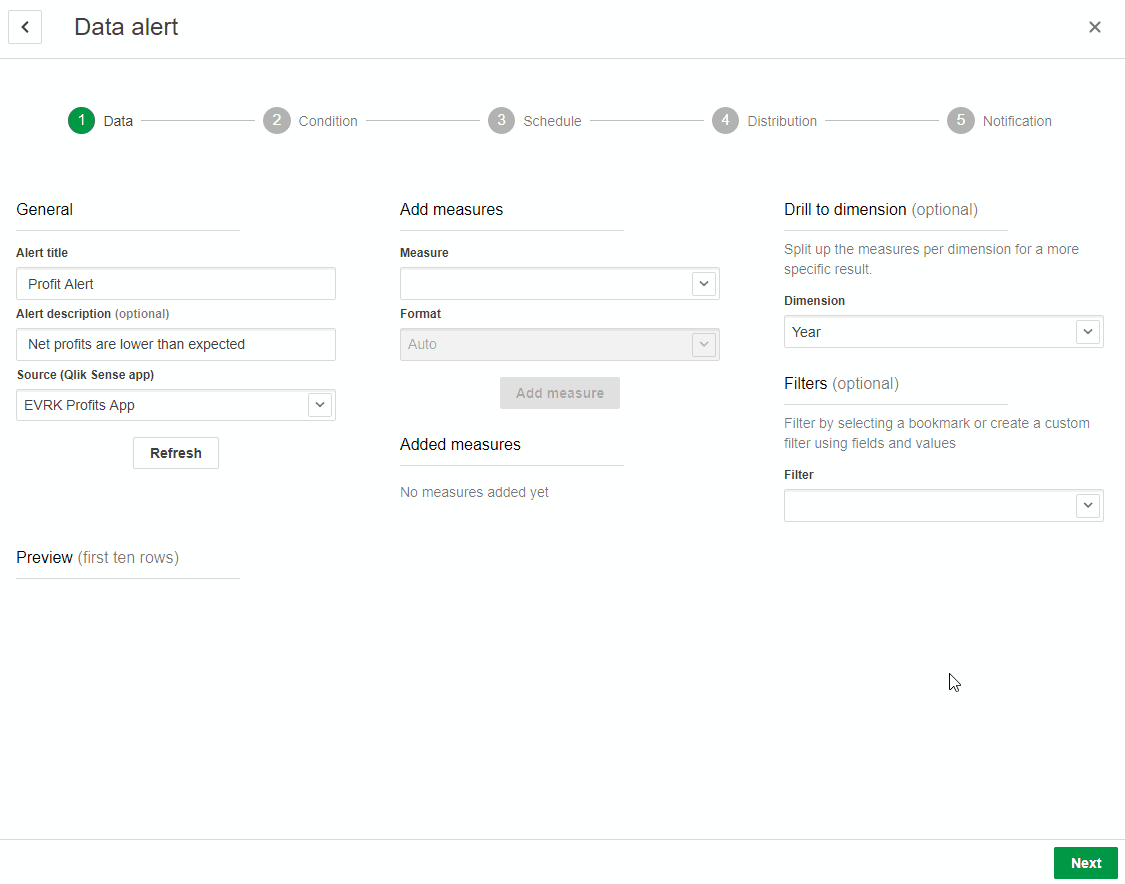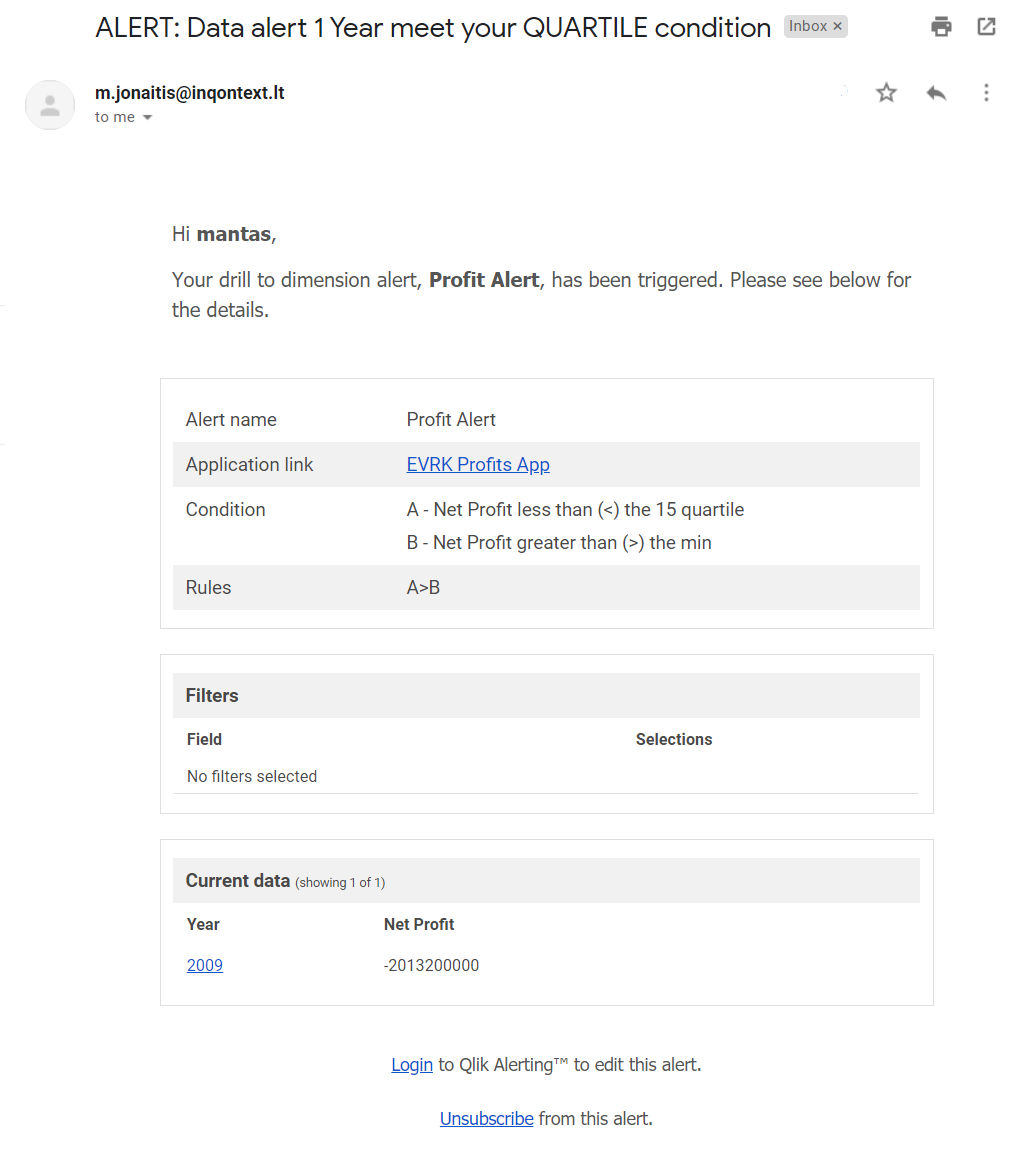Qlik Alerting is a new Qlik service that was introduced with the 2020 April release. Using Qlik Alerting enables organizations with the ability to proactively manage and monitor businesses with the help of data-driven alerts. This article will overview the capabilities of this new service and some exciting ways your organizations could benefit from it.
DATA ALERTS
These types of alerts allow users be informed about important changes inside the organization.
Qlik Alerting maintains intelligent alerting criteria based on advanced statistical calculations and trends, comparisons and percentage changes, nested logic or drill-in dimension functions, among other things. Alerts can be created and managed either in self-service or centrally.
I will highlight some of the key elements that are available while creating these alerts.
Section access
While creating the alerts section access transfers to Qlik Alerting as well. It means that the person creating the alert can only see the apps, sheets and data that it is allowed. This ensures that there are no loopholes which would allow people to see information, that is not meant for them.
The landing
During the creation of the alert, you are able to select a sheet in which you will be taken to, when you receive an alert and click on the link. You can be certain that you are always taken to a proper window and observe relevant information with context provided by visualizations in it.
Rules

Through its advanced statistical calculation and trending, Qlik Alerting can easily identify outliers and anomalies. The rules are created almost exactly the same way as in Qlik Sense and during the creation you are provided with the current context of data that you are working with.
The Alerting
This feature allows you to select when you would like to receive your alerts. One option sends the alerts whenever the data is reloaded and they meet the conditions. The other option lets you select a schedule. Say every Monday at 9:00AM.
Distribution
Finally, you can select exactly who will be able to receive these the created alerts. The options are selection of individual persons or groups. You might create an alert about sales not meeting a target and only want these alerts to reach the sales team. You can easily do that. Additionally, you can select where you would like these alerts to be sent either your email or your phone if you have Qlik Sense set up on it.

System alerts
These alerts are perfect for any Qlik administrator. It lets them keep up with any expected or unexpected changes that happens with tasks. System alerts ensures that administrators are always aware if any critical data reload tasks fail, or respectively succeed. All the alerting and distribution attributes, that were highlighted before apply here as well.
Other uses
Not only does Qlik Alerting offer self-service capabilities for users to create their own alerts on the data they have access to in Qlik Sense, it also enables users (usually power users) to create and manage alerts for others. A robust centralized application allows administrators to define and manage sophisticated alerts for wide distribution, while users can easily set up data-driven alerts themselves thanks to a simple Qlik Sense interface
TAKE AWAY
Using the proven associative engine to deliver contextual alerts across the entire database, Qlik alerting allows companies to not stray from intended goals. Having full alertness allows companies to proactively monitor their business data and take timely and effective actions through detailed data views.
If you would like to find out more, you can follow this link to the official Qlik Alerting website.
